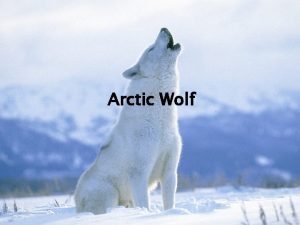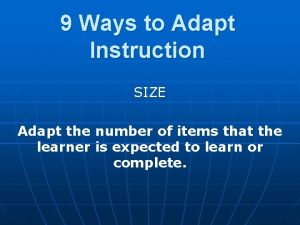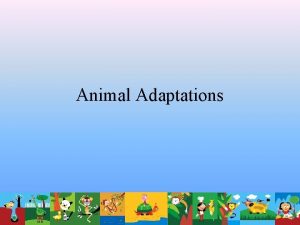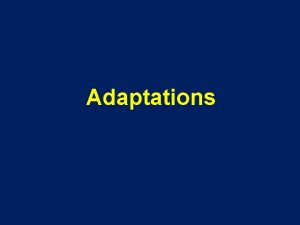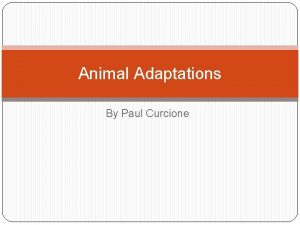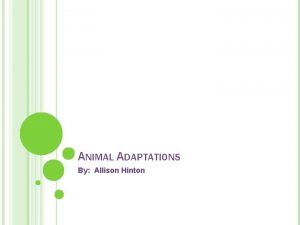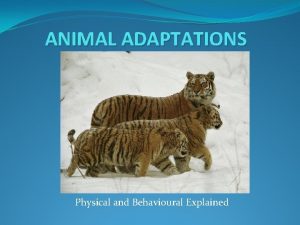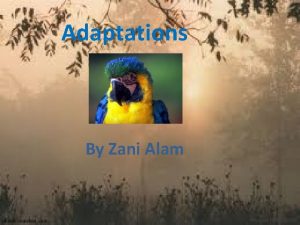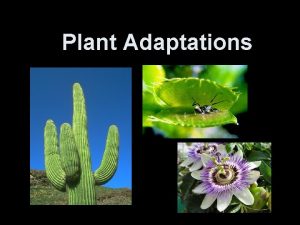Animal Adaptations Science 2 Animals Adapt Animals can











- Slides: 11

Animal Adaptations Science 2

Animals Adapt • Animals can live in many different places in the world. • This is because they have special adaptations to live in that environment. • An adaptation is the way an animal’s body helps it to survive, or live in its environment.

Animals Adapt • Examples of animal adaptations: * A camel: 1. has long eyelashes to keep sand out of its eyes 2. has nostrils that close to keep sand out 3. has a hump to store water

Animals Adapt • Examples of animal adaptations: * A polar bear: 1. has white fur to blend in with the snow 2. has an extra layer of fat to keep it warm 3. has wide, large paws to help it walk on ice and snow

Camouflage • One way animals protect themselves from predators (or enemies) is through camouflage. • When animals use camouflage, they blend into their surroundings. This makes them hard to see. • Can you think of some animals that use camouflage as a means of protection?

Camouflage Look at these pictures. Can you find the animal or insect? a rabbit a bird a butterfly a crocodile fish

Hibernation • Another way that animals adapt to their environment is through hibernation. • Hibernation is when animals go to “sleep” for the winter. • Can you think of some animals that hibernate during the winter?

Migration • Another way that animals adapt to their environment is through migration. • Migration is when an animal or insect moves from one place to another. • Can you think of some animals that migrate?

Review • We have learned about three different types of animal adaptations: camouflage, hibernation, and migration. • Read the animal adaptation below and tell which type of adaptation each animal is showing: A groundhog sleeping for the winter hibernation A butterfly flying to South America migration A white rabbit in the Arctic camouflage

Adaptation Websites • • http: //ecokids. earthday. ca/pub/eco_info/topics/climate/adaptations/index. cfm http: //www. teachervision. fen. com/tv/curriculum/weeklywebadventures/animal_adapt/t_home. html • • http: //www. state. sd. us/deca/DDN 4 Learning/Theme. Units/adaptations/online. htm http: //www. manatee. k 12. fl. us/sites/elementary/palmasola/ps 3 adaptunitlcen. htm

Camouflage Why do you think camouflage is a good way for animals to protect themselves?


